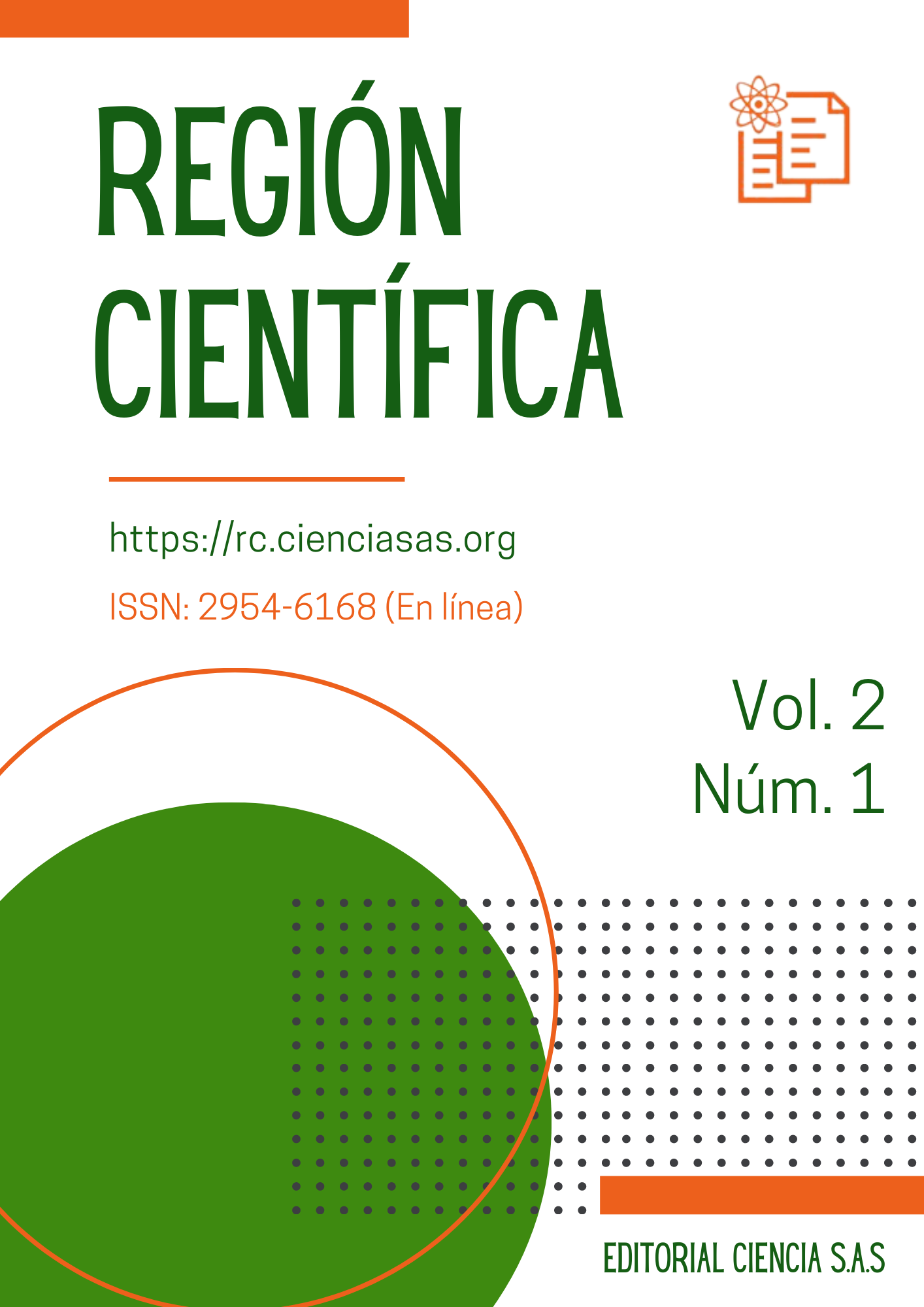Regional development and its impact on mexican society
DOI:
https://doi.org/10.58763/rc202336Keywords:
social welfare, regional development, local development, public policies, regional inequalityAbstract
Addressing the challenge of regional development in Mexico, a priority for authorities and society requires a holistic integration of economic and social policies geared towards sustainability. This research focused on deliberating about the impact of regional development on Mexican culture, adopting a qualitative paradigm, and conducting an exploratory study through a robust documentary review guided by a scientometric analysis. Databases such as Google Scholar and ScienceDirect were accessed without language restrictions, using descriptors like 'regional development,' 'Mexican society,' 'impact of regional development,' 'regional problems', and 'regional inequalities', covering the period from 2000 to 2022. The thematic lines identified in the research on regional development in Mexico emphasize the consolidation of public and social policies, the identification of regional problems with a particular focus on vulnerable groups and poverty in Latin America, and propose solutions to social inequalities through collective action and the promotion of local development
Metrics
References
Azis, I. (2020). Regional Development and Noneconomic Factors. In A. Kobayashi (Ed.), International Encyclopedia of Human Geography (Second Edition) (pp. 269-274). Elsevier. https://doi.org/https://doi.org/10.1016/B978-0-08-102295-5.10117-9
Bian, F. y Yeh, A. (2020). Spatial–economic impact of missing national highway links on China’s regional economy. Transportation Research Part D: Transport and Environment, 84, 102377. https://doi.org/10.1016/j.trd.2020.102377
Braiki, H., Hassenforder, E., Lestrelin, G., Morardet, S., Faysse, N., Younsi, S., Ferrand, N., Leauthaud, C., Aissa, N., Mouelhi, S., Jebari, S., Augusseau, X., Imache, A., Barbe, A., Jamin, J.-Y., Amri, H., Arfa, H., Bayar, A., Hassine, A., Ferchichi, R., Ghanmi, K., Haddeji, F., Harbaoui, K., Messaoudi, N. y Zouari, E. (2022). Large-scale participation in policy design: citizen proposals for rural development in Tunisia. EURO Journal on Decision Processes, 10, 100020. https://doi.org/10.1016/j.ejdp.2022.100020
Caschili, S., De Montis, A. y Trogu, D. (2015). Accessibility and rurality indicators for regional development. Computers, Environment and Urban Systems, 49, 98-114. https://doi.org/10.1016/j.compenvurbsys.2014.05.005
Correia, W., Oliveira-Júnior, J., Santos, C., Batista, B., Santiago, D., Silva, C., Teodoro, P., Costa, C., Silva, E. y Freire, F. (2022). The influence of urban expansion in the socio-economic, demographic, and environmental indicators in the City of Arapiraca-Alagoas, Brazil. Remote Sensing Applications: Society and Environment, 25, 100662. https://doi.org/10.1016/j.rsase.2021.100662
Danielaini, T., Maheshwari, B. y Hagare, D. (2019). An assessment of household water insecurity in a rapidly developing coastal metropolitan region of Indonesia. Sustainable Cities and Society, 46, 101382. https://doi.org/10.1016/j.scs.2018.12.010
Deng, X., Wang, Y. y Song, M. (2023). Development Geography for exploring solutions to promote regional development. Geography and Sustainability, 4(1), 49-57. https://doi.org/10.1016/j.geosus.2022.12.003
Fan, J. y Zou, B. (2021). Industrialization from scratch: The “Construction of Third Front” and local economic development in China's hinterland. Journal of Development Economics, 152, 102698. https://doi.org/10.1016/j.jdeveco.2021.102698
Fudge, M., Ogier, E. y Alexander, K. (2021). Emerging functions of the wellbeing concept in regional development scholarship: A review. Environmental Science & Policy, 115, 143-150. https://doi.org/10.1016/j.envsci.2020.10.005
Gómez, J. (2014). La contribución de las acciones colectivas al desarrollo regional desde la perspectiva del derecho social. Cuestiones Constitucionales, 30, 59-89. https://doi.org/10.1016/S1405-9193(14)70459-7
González, D., Muñoz, D., Gaviria, D., Ferrer, D., Barrera, J., Arias, D., Gomez, M., Córdoba, H., Burgos, J. y Flórez, J. (2022). Estudio de Tendencias del Desarrollo Regional 2015. https://repositorio.ucp.edu.co/handle/10785/10596
Gritsenko, D. y Efimova, E. (2020). Is there Arctic resource curse? Evidence from the Russian Arctic regions. Resources Policy, 65, 101547. https://doi.org/10.1016/j.resourpol.2019.101547
Guo, W., Chen, L., Fan, Y., Liu, M. y Jiang, F. (2021). Effect of ambient air quality on subjective well-being among Chinese working adults. Journal of Cleaner Production, 296, 126509. https://doi.org/10.1016/j.jclepro.2021.126509
Hoffman, G. (1977). Regional policies and regional consciousness in Europe's multinational societies. Geoforum, 8(3), 121-129. https://doi.org/10.1016/0016-7185(77)90003-3
Huerta, A. (2020). Los desequilibrios regionales y la desigualdad social en México. Economía UNAM, 17(49), 116-131. https://doi.org/10.22201/fe.24488143e.2020.49.510
Huyghe, W., Hernández-Pacheco, M., van Leeuwen, K., Koop, S. y Eisenreich, S. (2021). Assessment of the urban water cycle in Antwerp (BE): The City Blueprint Approach (CBA). Cleaner Environmental Systems, 2, 100011. https://doi.org/10.1016/j.cesys.2021.100011
Kim, D. (2022). Assessing regional economy in North Korea using nighttime light. Asia and the Global Economy, 2(3), 100046. https://doi.org/10.1016/j.aglobe.2022.100046
Kliksberg, B. (2007). ¿Cómo avanzar la participación en América Latina, el continente más desigual? Anotaciones estratégicas. Revista del CLAD Reforma y Democracia, (37), 1-27. https://www.redalyc.org/pdf/3575/357533669002.pdf
Kupiec, T. y Wojtowicz, D. (2022). 'Quality of life' concept in Cohesion Policy evaluation in Poland, 2004–2020. Evaluation and Program Planning, 94, 102153. https://doi.org/10.1016/j.evalprogplan.2022.102153
Lin, Y., Peng, C., Chen, P. y Zhang, M. (2022). Conflict or synergy? Analysis of economic-social- infrastructure-ecological resilience and their coupling coordination in the Yangtze River economic Belt, China. Ecological Indicators, 142, 109194. https://doi.org/10.1016/j.ecolind.2022.109194
López, A. (2016). Cuestiones Constitucionales, 35, 307-315. https://doi.org/10.22201/iij.24484881e.2016.35.10500
Marchewka, A. (2021). Applying Vector Measure Construction Method (VMCM) to analyze change dynamics of investment attractiveness of the region. Procedia Computer Science, 192, 3252-3261. https://doi.org/10.1016/j.procs.2021.09.098
Martin, R., Pike, A., Tyler, P. y Gardoner, B. (2010). Spatially Rebalancing the UK Economy: The Need for a New Economic Model. Regional Studies Association, The Global Forum for City and Regional Research, Development and Policy.
Masse, J.-P. y Fenerci-Masse, M. (2022). Diversity dynamics, trophic, community and environmental changes in early cretaceous rudist bivalves (Hippuritida): New insights on the late Barremian “Agriopleura extinction event” and subsequent recovery. Palaeogeography, 601, 111143. https://doi.org/10.1016/j.palaeo.2022.111143
Merrell, I., Phillipson, J., Gorton, M. y Cowie, P. (2022). Enterprise hubs as a mechanism for local economic development in rural areas. Journal of Rural Studies, 93, 81-91. https://doi.org/10.1016/j.jrurstud.2022.05.016
Murakami, S., Takasu, T., Islam, K., Yamasue, E. y Adachi, T. (2020). Ecological footprint and total material requirement as environmental indicators of mining activities: Case studies of copper mines. Environmental and Sustainability Indicators, 8, 100082. https://doi.org/10.1016/j.indic.2020.100082
Nesterov, E., Rudakova, E., Borisov, A., Morkovkin, D., Vlasov, A., Mottaeva, A., Niyazbekova, S., Semenov, A. y Gavrilova, E. (2022). Development of transport service to the population in the social and economic spheres of the state. Transportation Research Procedia, 63, 1404-1409. https://doi.org/10.1016/j.trpro.2022.06.151
Orejon-Sanchez, R., Crespo-Garcia, D., Andres-Diaz, J. y Gago-Calderon, A. (2022). Smart cities’ development in Spain: A comparison of technical and social indicators with reference to European cities. Sustainable Cities and Society, 81, 103828. https://doi.org/10.1016/j.scs.2022.103828
Palekiene, O., Simanaviciene, Z. y Bruneckiene, J. (2015). The Application of Resilience Concept in the Regional Development Context. Procedia - Social and Behavioral Sciences, 213, 179-184. https://doi.org/10.1016/j.sbspro.2015.11.423
Pike, A., Rodríguez-Pose, A., Tomaney, J., Torrisi, G. y Tselios, V. (2010). Spatial Disparities, Spatial Economic Policy and Decentralisation in the UK. Search of the ‘Economic Dividend’ of Devolution.
Popkova, E., Ekimova, K. y Sergi, B. (2020). Data set of balance of Russia's regional economy in 2005–2024 based on the methodology of calculation of “underdevelopment whirlpools”. Data in Brief, 31, 105821. https://doi.org/10.1016/j.dib.2020.105821
Putri, R., Astuti, W. y Rahayu, M. (2016). Community Capacity in Providing Neighborhood Unit-scale Social Infrastructure in Supporting Surakarta Child Friendly. Procedia - Social and Behavioral Sciences, 227, 536-544. https://doi.org/10.1016/j.sbspro.2016.06.112
Rędzińska, K., Szulczewska, B. y Wolski, P. (2022). The landscape thresholds analysis as an integrated approach to landscape interpretation for planning purposes. Land Use Policy, 119, 106141. https://doi.org/10.1016/j.landusepol.2022.106141
Ríos-Carmenado, I., Rahoveanu, A. y Gallegos, A. (2014). Project Management Competencies for Regional Development in Romania: Analysis from “Working with People” Model. Procedia Economics and Finance, 8, 614-621. https://doi.org/10.1016/S2212-5671(14)00136-1
Rodrigues, L. y Craig, R. (2018). The role of government accounting and taxation in the institutionalization of slavery in Brazil. Critical Perspectives on Accounting, 57, 21-38. https://doi.org/10.1016/j.cpa.2018.02.001
Romão, J. y Neuts, B. (2017). Territorial capital, smart tourism specialization and sustainable regional development: Experiences from Europe. Habitat International, 68, 64-74. https://doi.org/10.1016/j.habitatint.2017.04.006
Romero, Y., Ramos, G. y Muñoz, J. (2022). Análisis y configuración del desarrollo regional. Un enfoque desde los actores. Espacios Públicos, 15(34). https://espaciospublicos.uaemex.mx/article/view/19747
Safarzyńska, K. (2013). Evolutionary-economic policies for sustainable consumption. Ecological Economics, 90, 187-195. https://doi.org/10.1016/j.ecolecon.2013.03.020
Sogabe, T. y Maki, N. (2022). Do disasters provide an opportunity for regional development and change the societal trend of impacted communities?: Case study on the 1995 Kobe earthquake. International Journal of Disaster Risk Reduction, 67, 102648. https://doi.org/10.1016/j.ijdrr.2021.102648
Staroňová, K. y Gajduschek, G. (2016). Public administration education in CEE countries: Institutionalization of a discipline. Policy and Society, 35(4), 351-370. https://doi.org/10.1016/j.polsoc.2016.11.002
Svenfelt, Å., Alfredsson, E., Bradley, K., Fauré, E., Finnveden, G., Fuehrer, P., Gunnarsson-Östling, U., Isaksson, K., Malmaeus, M., Malmqvist, T., Skånberg, K., Stigson, P., Aretun, Å., Buhr, K., Hagbert, P. y Öhlund, E. (2019). Scenarios for sustainable futures beyond GDP growth 2050. Futures, 111, 1-14. https://doi.org/10.1016/j.futures.2019.05.001
Tödtling, F. (2020). Regional Development, Endogenous. In A. Kobayashi (Ed.), International Encyclopedia of Human Geography (Second Edition) (pp. 303-308). Elsevier. https://doi.org/https://doi.org/10.1016/B978-0-08-102295-5.10121-0
Vázquez, A. (2000). Desarrollo Endógeno y Globalización. Eure, 26(79), 47-65. http://dx.doi.org/10.4067/S0250-71612000007900003
Wei, L., Lin, B., Zheng, Z., Wu, W. y Zhou, Y. (2023). Does fiscal expenditure promote green technological innovation in China? Evidence from Chinese cities. Environmental Impact Assessment Review, 98, 106945. https://doi.org/10.1016/j.eiar.2022.106945
Wildman, P. (1990). Methodological and social policy issues in social impact assessment. Environmental Impact Assessment Review, 10(1), 69-79. https://doi.org/10.1016/0195-9255(90)90007-M
Williams, G. y Nikijuluw, R. (2020). Economic and social indicators between coal mining LGAs and non-coal mining LGAs in regional Queensland, Australia. Resources Policy, 67, 101688. https://doi.org/10.1016/j.resourpol.2020.101688
Woodgate, R. (2001). Adopting the qualitative paradigm to understanding children's perspectives of illness: Barrier or facilitator? Journal of Pediatric Nursing, 16(3), 149-161. https://doi.org/10.1053/jpdn.2001.24178
Wu, Z., Woo, S.-H., Lai, P.-L. y Chen, X. (2022). The economic impact of inland ports on regional development: Evidence from the Yangtze River region. Transport Policy, 127, 80-91. https://doi.org/10.1016/j.tranpol.2022.08.012
Xu, K., Qian, X. y Wen, Q. (2022). Stewardship of built vernacular heritage for local development: A field research in southwestern villages of China. Habitat International, 129, 102665. https://doi.org/10.1016/j.habitatint.2022.102665
Zarycki, T. (2007). History and regional development. A controversy over the ‘right’ interpretation of the role of history in the development of the Polish regions. Geoforum, 38(3), 485-493. https://doi.org/10.1016/j.geoforum.2006.11.002
Zhao, X., Long, L., Yin, S. y Zhou, Y. (2023). How technological innovation influences carbon emission efficiency for sustainable development? Evidence from China. Resources, Environment and Sustainability, 14, 100135. https://doi.org/10.1016/j.resenv.2023.100135
Zheng, L., Jing, X., Zhang, Q., Zhan, X., Zhang, A. y Hussain, H. (2021). Nitrogen and phosphorus trajectories (1998–2030) under regional development strategy of mainland China. Science of The Total Environment, 794, 148655. https://doi.org/10.1016/j.scitotenv.2021.148655
Downloads
Published
How to Cite
Issue
Section
License
Copyright (c) 2023 Verónica Vázquez Vidal, German Martínez Prats

This work is licensed under a Creative Commons Attribution-NonCommercial-ShareAlike 4.0 International License.
Este artículo se distribuye bajo la licencia Creative CommonsReconocimiento-NoComercial-CompartirIgual 4.0 Internacional. A menos que se indique lo contrario, el material publicado asociado se distribuye bajo la misma licencia.












